If only the rest of life were as simple as growing succulents in an open terrarium. All you have to do is find a few like-minded plants, introduce them to each other, and place them in an environment they like. Then leave them alone to get to know each other. That’s pretty much all there is to creating an open terrarium. Here are step-by-step, no-fail instructions:
Photographs by John Merkl.

Need to know: There are two kinds of terrariums, open vessels (for succulents and cacti) and closed containers for humidity-loving plants. An open terrarium will dry out quickly; it’s suitable for growing plants that love sun and don’t require a moist environment.
Keep it simple: The only materials you need in addition to a container are pebbles, charcoal, soil, small succulents, and herb snips to trim them.
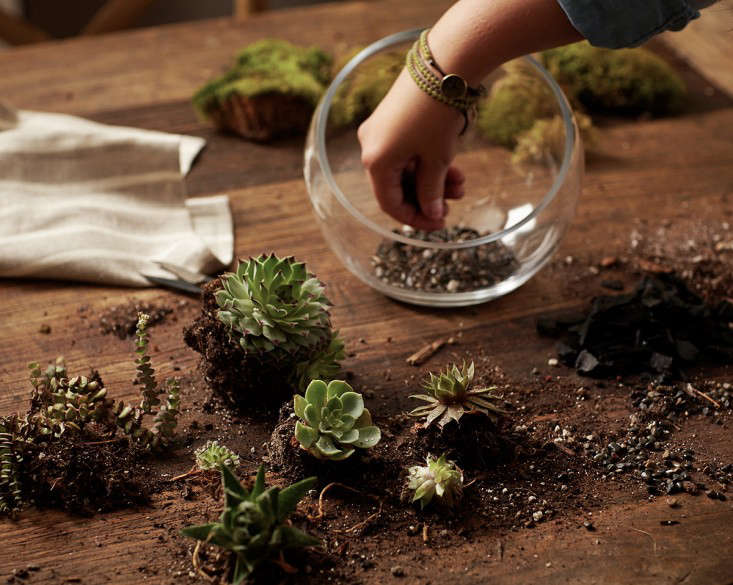
Step 1: Spread a 1- to 2-inch base of pebbles at the bottom of the container. This will aid drainage in the event that you water the terrarium (which, by the way you should not do except once a month–and then, with teaspoonfuls of water).
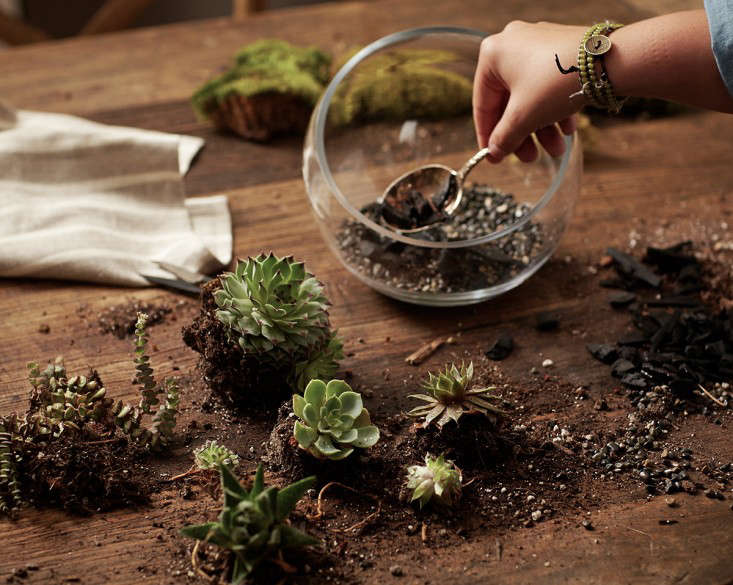
Step 2: Sprinkle a 1-inch layer of charcoal on top of the pebbles to filter the soil.
Step 3: Add a 2-inch layer of cactus potting soil (it’s specially formulated for succulents and other plants that like a dry environment).
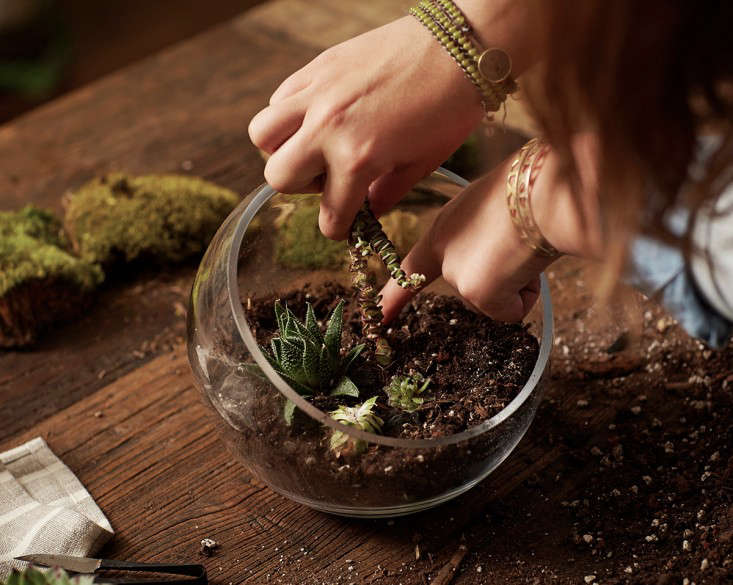
Step 4: Before planting them, arrange the succulents in the container with plenty of room to grow. Don’t overcrowd them. Trim with herb snips, if necessary, to give them room to breathe.
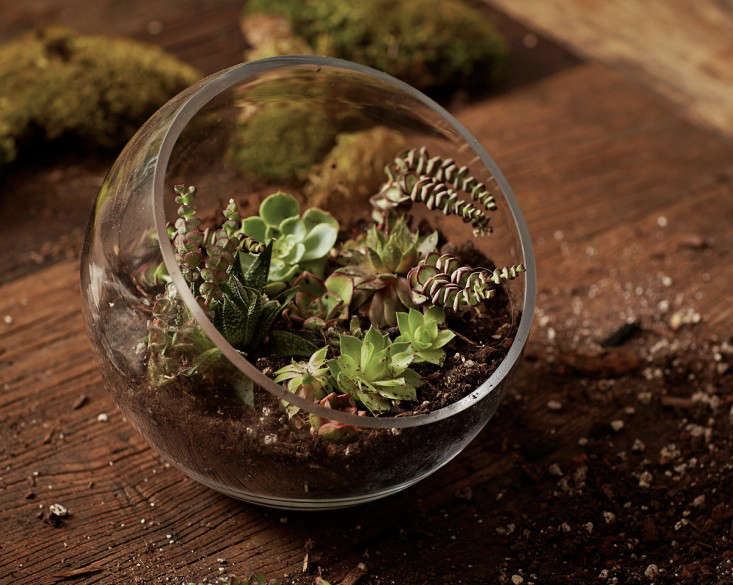
Step 5: Hollow out a spot in the potting soil for the plants. Firmly pat soil to cover their roots. Give each plant a teaspoonful of water but don’t overwater.
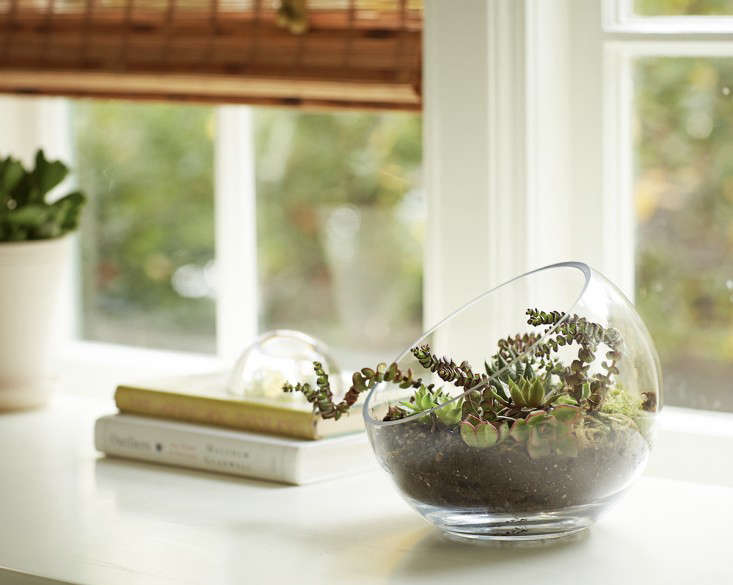
Above: If your terrarium is going to house ferns or other humidity-loving plants (instead of succulents), see Gardening 101: How to Plant a Closed Terrarium.
See 15 more Gardening 101 posts, including How to Water an Air Plant and How to Draw a Garden Plan.


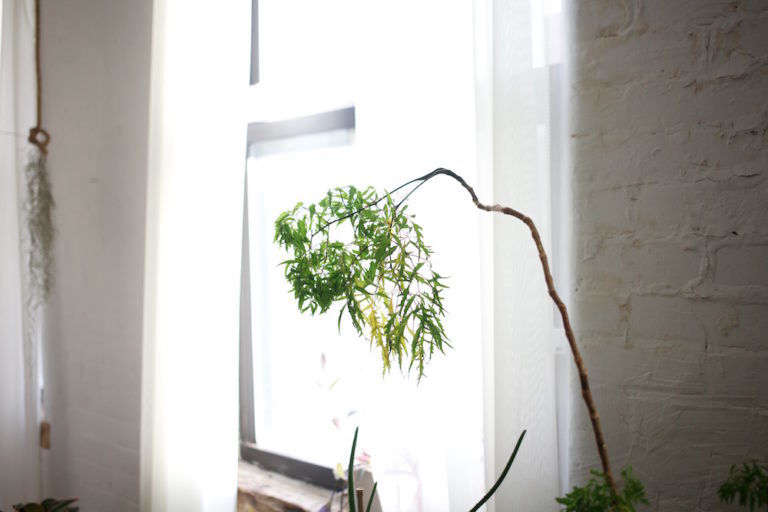

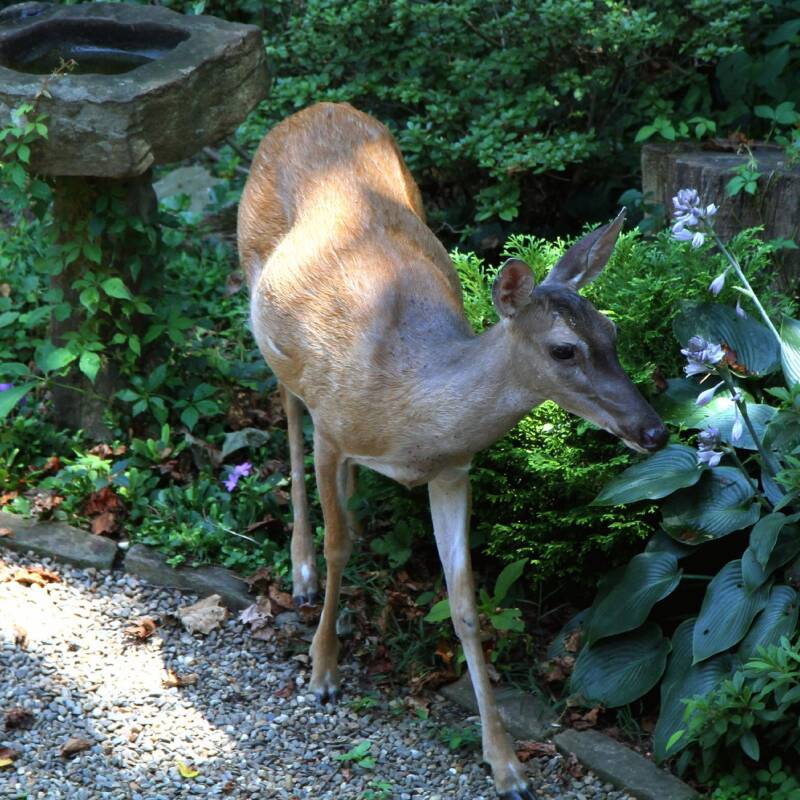



Have a Question or Comment About This Post?
Join the conversation